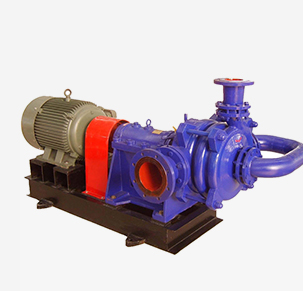English
- Afrikaans
- Albanian
- Amharic
- Arabic
- Armenian
- Azerbaijani
- Basque
- Belarusian
- Bengali
- Bosnian
- Bulgarian
- Catalan
- Cebuano
- Corsican
- Croatian
- Czech
- Danish
- Dutch
- English
- Esperanto
- Estonian
- Finnish
- French
- Frisian
- Galician
- Georgian
- German
- Greek
- Gujarati
- Haitian Creole
- hausa
- hawaiian
- Hebrew
- Hindi
- Miao
- Hungarian
- Icelandic
- igbo
- Indonesian
- irish
- Italian
- Japanese
- Javanese
- Kannada
- kazakh
- Khmer
- Rwandese
- Korean
- Kurdish
- Kyrgyz
- Lao
- Latin
- Latvian
- Lithuanian
- Luxembourgish
- Macedonian
- Malgashi
- Malay
- Malayalam
- Maltese
- Maori
- Marathi
- Mongolian
- Myanmar
- Nepali
- Norwegian
- Norwegian
- Occitan
- Pashto
- Persian
- Polish
- Portuguese
- Punjabi
- Romanian
- Russian
- Samoan
- Scottish Gaelic
- Serbian
- Sesotho
- Shona
- Sindhi
- Sinhala
- Slovak
- Slovenian
- Somali
- Spanish
- Sundanese
- Swahili
- Swedish
- Tagalog
- Tajik
- Tamil
- Tatar
- Telugu
- Thai
- Turkish
- Turkmen
- Ukrainian
- Urdu
- Uighur
- Uzbek
- Vietnamese
- Welsh
- Bantu
- Yiddish
- Yoruba
- Zulu
Telephone: +86 13120555503
Email: frank@cypump.com
Nov . 11, 2024 15:01 Back to list
high quality horizontal double suction pumps
High-Quality Horizontal Double Suction Pumps An Overview
In the industrial world, the efficiency of fluid transfer systems is paramount for ensuring smooth operations. Among the various types of pumps available, horizontal double suction pumps have emerged as a preferred choice for many industries due to their design, efficiency, and capability to handle large volumes of fluids. This article delves into the features, advantages, applications, and maintenance of high-quality horizontal double suction pumps.
Design Features
Horizontal double suction pumps are characterized by their unique design that allows water or other fluids to enter the pump from both sides of the impeller. This bi-directional flow design minimizes hydraulic imbalance, which in turn enhances the operational stability of the pump. The impeller is usually confined in a volute casing that directs the fluid out of the pump efficiently. The design also contributes to lower vibration levels and reduced noise, making these pumps suitable for various industrial applications.
One of the standout features of horizontal double suction pumps is their robust construction. Typically made from durable materials such as cast iron, stainless steel, or bronze, these pumps are built to withstand different operating conditions. Moreover, the horizontal orientation allows for easy accessibility for maintenance and installation, which is a significant advantage in industrial settings.
Advantages
The benefits of horizontal double suction pumps are numerous. First and foremost, they offer high hydraulic efficiency, capable of transferring large quantities of fluid with minimal energy consumption. This efficiency translates into lower operational costs, making them a budget-friendly option for long-term use.
Another major advantage is their ability to operate efficiently at varying flow rates. This flexibility is critical in industries where demand can fluctuate significantly. Furthermore, the design reduces the likelihood of cavitation—a phenomenon that can damage pumps over time—thereby enhancing the longevity and reliability of the pump.
The dual suction feature also allows for a higher flow rate within a compact design, which is particularly useful in applications where space is limited. Additionally, these pumps can handle a range of fluids, from clean water to more viscous substances, making them versatile across different industries.
Applications
Horizontal double suction pumps are widely used in a variety of sectors, including
high quality horizontal double suction pumps

1. Water Supply and Distribution These pumps are pivotal in municipal water supply systems, ensuring efficient transfer from treatment facilities to distribution networks.
2. Irrigation Systems Farmers utilize these pumps for large-scale irrigation needs, supporting agriculture by providing reliable water sources.
3. Power Plants In thermal and hydroelectric power plants, these pumps manage water flow crucial for cooling and operational processes.
4. Mining and Construction They are frequently deployed in dewatering applications, helping to remove water from excavation sites efficiently.
5. Chemical Processing Their ability to handle aggressive fluids makes them suitable for transporting various chemicals in industrial processing.
Maintenance
To ensure optimal performance, regular maintenance of horizontal double suction pumps is essential. Operators should focus on routine inspections of seals and bearings, as these components can wear over time. Lubrication schedules must be followed to prevent overheating, and cleanliness is vital to avoid contamination of the fluids being pumped.
Additionally, operators should monitor the pump's performance metrics, such as flow rate and pressure, to catch any irregularities early. Implementing a proactive maintenance strategy not only extends the life of the pump but also reduces the likelihood of unexpected downtimes.
Conclusion
High-quality horizontal double suction pumps play an indispensable role in many industrial operations. Their efficient design, coupled with their ability to handle large flow rates and varying applications, makes them an ideal choice for industries ranging from water treatment to chemical processing. By prioritizing maintenance and understanding their operational advantages, businesses can harness the full potential of these remarkable pumps, ensuring reliability and efficiency in their fluid transfer systems.
-
ISG Series Vertical Pipeline Pump - Chi Yuan Pumps Co., LTD.|Advanced Hydraulic Design&Energy-Efficient Solutions
NewsJul.30,2025
-
ISG Series Vertical Pipeline Pump - Chi Yuan Pumps Co., LTD.
NewsJul.30,2025
-
ISG Series Vertical Pipeline Pump - Chi Yuan Pumps Co., LTD.|energy-efficient fluid handling&industrial durability
NewsJul.30,2025
-
ISG Series Vertical Pipeline Pump - Chi Yuan Pumps | Advanced Engineering&Industrial Efficiency
NewsJul.30,2025
-
ISG Series Pipeline Pump - Chi Yuan Pumps | High Efficiency, Energy Saving
NewsJul.30,2025
-
ISG Series Vertical Pipeline Pump-Chi Yuan Pumps|High Efficiency&Reliable Performance
NewsJul.29,2025










